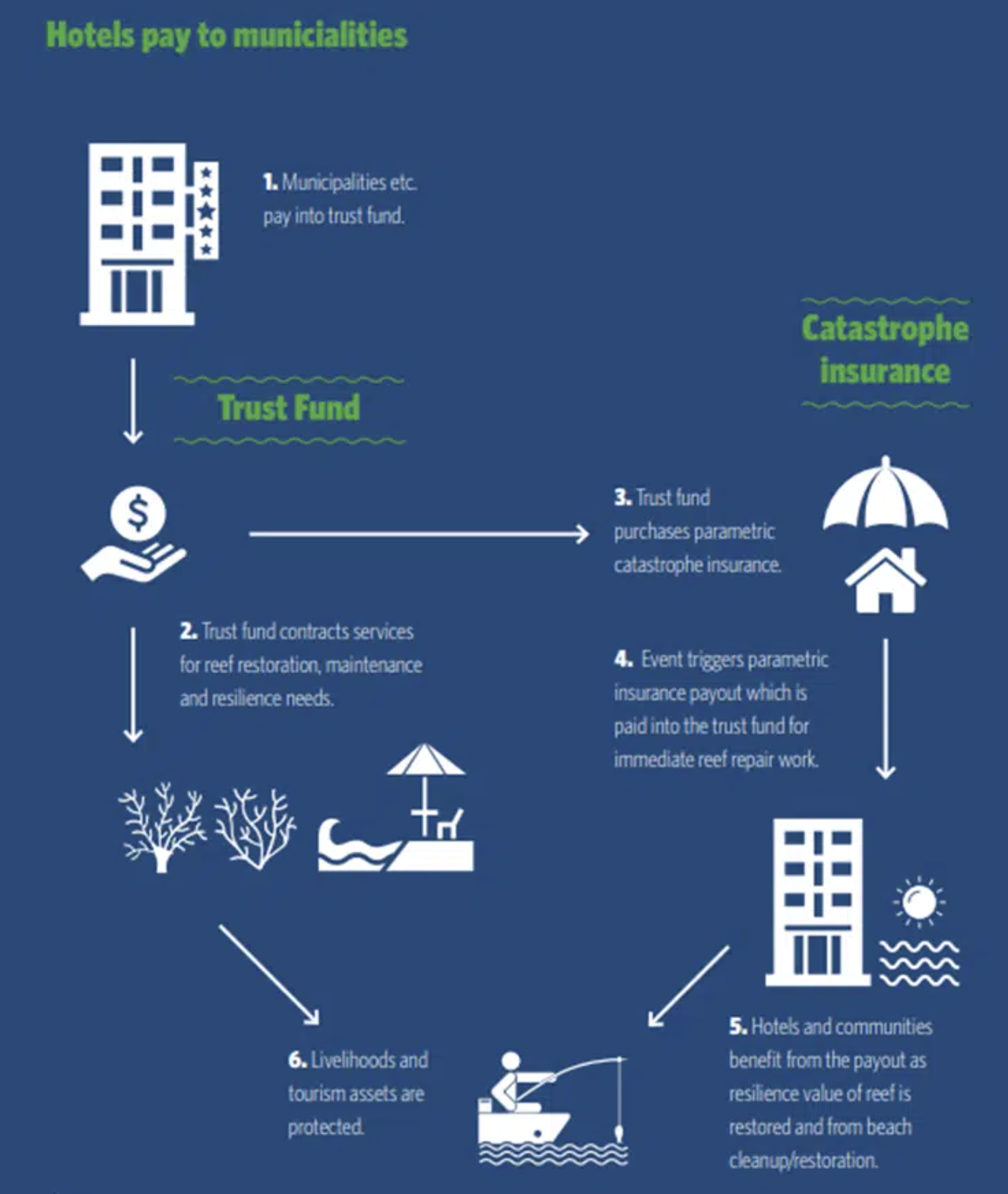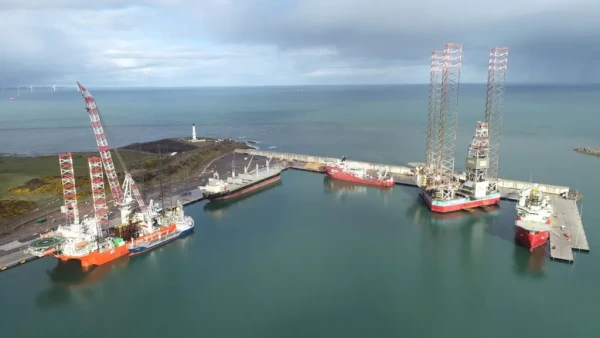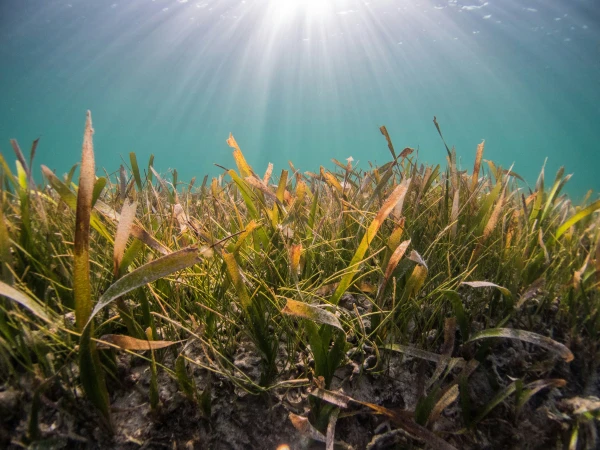Our Views
Blue Economy Intel #2: Innovating Insurance Solutions for Coral Reef Conservation
Welcome to the second installment of our "Blue Economy Intel" series, where we explore innovative strategies contributing to the sustainable use of oceans and marine resources. In this edition, we delve into the realm of insurance solutions designed to preserve natural ecosystems, with a spotlight on the groundbreaking parametric insurance model initiated by Swiss Re.
In post 1 of our series we explained how to use debt swaps to finance ocean initiatives. Make sure to subscribe to our newsletter to stay updated on similar success stories in the Blue Economy and beyond.
In a world grappling with the escalating impacts of climate change, the need for innovative solutions to protect vulnerable ecosystems has never been more crucial. The intersection of finance and environmental conservation has given rise to the world's first insurance solution aimed at preserving a natural ecosystem — an innovative approach that holds promise for safeguarding our planet's biodiversity and communities.
1. Understanding the Coral Reef Challenge
1.1. Why Coral Reefs are Important in Nature?
Coral reefs are vibrant and complex ecosystems that serve as the lifeblood of our oceans. These diverse marine habitats are home to a quarter of all oceanic species, providing a crucial breeding ground for marine life. The intricate structures of coral reefs offer shelter, sustenance, and breeding sites for numerous fish, invertebrates, and other marine organisms.
Beyond their ecological significance, coral reefs play a pivotal role in protecting coastal areas from storms and wave erosion. The labyrinthine structures of coral formations act as natural barriers, reducing the impact of powerful waves and preventing coastal erosion. In addition, coral reefs contribute significantly to the global economy through activities such as tourism, commercial fishing, and pharmaceutical research.
Coral reefs are essential for maintaining biodiversity in the oceans. Approximately 25% of all marine species depend on coral reefs for their survival. These ecosystems support a delicate balance of marine life, from the smallest plankton to the largest predators. The intricate web of life within coral reefs fosters resilience, adaptability, and overall health in the marine environment.
1.2. Implications of the Loss of Coral Reefs
The impending loss of coral reefs poses severe consequences for both marine ecosystems and human societies. The primary threats to coral reefs include rising sea temperatures, storm damage, overfishing, pollution, and human activities such as trawler fishing. If these threats continue unchecked, it is estimated that by 2040, global coral reefs could face a devastating decline of between 70% and 90%.
The loss of coral reefs has far-reaching implications for marine biodiversity. With a quarter of all oceanic species relying on coral reefs, the decline of these ecosystems jeopardizes the survival of countless marine organisms. The ripple effect extends throughout the food chain, impacting both predators and prey.
Coastal communities heavily depend on coral reefs for protection against storms and hurricanes. The natural barriers created by coral formations reduce the intensity of waves, safeguarding coastlines from erosion and damage. The loss of coral reefs exposes these vulnerable coastal areas to increased risks of storm surges, leading to more significant economic losses and threats to human lives.
The economic consequences of declining coral reefs are substantial. Industries such as tourism and commercial fishing, which contribute billions of dollars annually, face imminent threats. Additionally, the loss of coral reefs undermines the potential for scientific discoveries and medical breakthroughs, as these ecosystems have proven to be a rich source of bioactive compounds with pharmaceutical applications.
1.3. Crisis in the Mesoamerican Reef
The Mesoamerican Reef, stretching nearly 1,000km along the Caribbean coasts of Mexico, Belize, Guatemala, and Honduras, is emblematic of the challenges facing coral reefs globally. As the largest reef system in the Americas, it encompasses coastal wetlands, mangrove forests, and seagrass beds that are vital for marine life.
The Mesoamerican Reef serves as a linchpin for the regional economy, supporting an annual contribution of approximately USD 6.2 billion through tourism, commercial fishing, and coastal development. This economic lifeline is at risk, with projections suggesting a potential 50% decline in economic support by 2030 due to coral reef deterioration.
In October 2020, Hurricane Delta dealt a significant blow to the Mesoamerican Reef, exacerbating the existing threats. The storm caused widespread damage to both land and sea, further highlighting the vulnerability of these ecosystems to extreme weather events.
Understanding the challenges facing coral reefs is paramount to developing effective conservation strategies. In the subsequent sections, we will explore the role of businesses in coral reef conservation, the crucial role of insurance in building reef resilience, and the detailed structure of the Quintana Roo insurance deal.
2. Why Businesses Need to Get Involved in Conserving Coral Reefs?
Coral reefs, critical to the vitality of our oceans, are facing unprecedented threats, prompting an urgent call for collective action. Understanding the intertwined relationship between coral reefs and businesses is paramount in formulating effective strategies for conservation.
Coral reefs play a pivotal role in supporting various business sectors, most notably tourism and commercial fishing. The economic value generated by activities reliant on healthy coral ecosystems underscores the imperative for businesses to actively engage in conservation efforts.
Tourism, a cornerstone of many coastal economies, draws millions of visitors globally to coral reef destinations. Activities such as snorkeling and diving contribute substantially to the tourism industry. However, the decline of coral reefs poses a direct threat to the revenue generated by coastal tourism.
Commercial fishing, another industry deeply connected to coral reefs, relies on these ecosystems as critical habitats for numerous fish species. Healthy coral ecosystems are essential for sustaining fisheries, ensuring a steady supply of fish for consumption and trade. The collapse of coral reefs jeopardizes the livelihoods of those dependent on the fishing industry.
In essence, businesses have a vested interest in the preservation of coral reefs, given the intricate connections between healthy ecosystems and economic prosperity. The subsequent sections will delve into the role of insurance in building reef resilience and the detailed structure of the Quintana Roo insurance deal, providing a blueprint for businesses to actively contribute to coral reef conservation.
3. The Role of Insurance in Reef Resilience
As coral reefs face escalating threats from climate change, storms, and human activities, the role of insurance emerges as a critical component in enhancing reef resilience. Insurance not only provides financial support for the recovery of damaged reefs but also incentivizes proactive conservation measures. Here's an exploration of why insurance is instrumental in preserving coral ecosystems:
Rapid Response to Natural Disasters
Coral reefs are highly vulnerable to the destructive forces of natural disasters, such as hurricanes and storms. The swift disbursement of insurance funds in the aftermath of such events is paramount for initiating timely restoration efforts. Insurance enables a rapid response, allowing for the stabilization of damaged coral colonies and the mitigation of long-term ecological impacts.
Financial Support for Conservation Initiatives
Insurance products designed for coral reefs go beyond post-disaster recovery. They can serve as funding mechanisms for ongoing conservation initiatives. By linking insurance premiums to conservation activities, businesses and governments contribute to the continuous protection and restoration of coral ecosystems. This proactive approach helps build resilience and ensures the long-term health of reefs.
Risk Mitigation for Coastal Businesses
For businesses operating in coastal areas where coral reefs are integral to tourism and fisheries, insurance acts as a risk mitigation tool. The economic losses incurred due to reef degradation can be substantial. Insurance coverage provides a safety net, offering businesses the confidence to invest in coral reef conservation without the fear of significant financial repercussions in the event of environmental damage.
Incentivizing Sustainable Practices
Insurance models that reward businesses for adopting sustainable practices contribute to the overall health of coral reefs. By aligning insurance premiums with environmentally responsible behavior, businesses are encouraged to implement measures that reduce their ecological footprint. This alignment of economic incentives with conservation objectives fosters a harmonious relationship between business interests and reef preservation.
Global Collaboration in Conservation
The development and adoption of coral reef insurance models foster global collaboration in conservation efforts. Insurance providers, businesses, governments, and environmental organizations work together to create innovative solutions that address the unique challenges faced by coral reefs. This collaborative approach not only enhances the effectiveness of conservation initiatives but also facilitates knowledge-sharing and best practices on a global scale.
4. Detailed Structure of the Quintana Roo Insurance Deal
The Quintana Roo insurance deal stands as a pioneering example of innovative collaboration between the public and private sectors to protect and preserve coral reefs, specifically the Mesoamerican Reef along Mexico's Yucatan Peninsula. Examining the intricate structure of this landmark insurance agreement provides valuable insights into how similar initiatives can be implemented elsewhere:
4.1. How Hotel Owners Pay Local Taxes
The financial foundation of the Quintana Roo insurance deal rests on the engagement of local businesses, particularly hotel owners, in contributing to the conservation efforts. Hotel owners in the region participate by paying local taxes, specifically federal taxes for the use and exploitation of coastal areas. This established taxation structure becomes a crucial funding source for the insurance premiums that underpin reef resilience.
The involvement of the local business community, represented by the Cancun and Puerto Morelos Hotels' Association, amplifies the impact of the initiative. The influence and aggregation benefits of such associations become instrumental in engaging with stakeholders and garnering financial support for the conservation cause.
4.2. The Use of Taxes to Pay the Insurance
The collected taxes are directed towards a Coastal Zone Management Trust (CMZT), established by the State Government of Quintana Roo in 2018. This trust serves as a financial hub, receiving contributions from various sources, including property owner fees, government funds, and philanthropic grants. The collaborative governance structure of CMZT involves government officials, scientific experts, NGOs, hotel association representatives, and others.
Within the CMZT framework, a portion of the funds is allocated to securing insurance coverage for the Mesoamerican Reef. The insurance policy, designed as a parametric solution, is triggered by specific indicators, such as hurricane wind speeds reaching critical levels. This innovative approach ensures rapid disbursement of funds, enabling swift action in the aftermath of natural disasters.
Part of the success of the Quintana Roo insurance deal lies in its ability to leverage existing financial mechanisms, such as taxation and trust funds, to directly contribute to the protection of vital natural assets. This financial innovation aligns economic interests with environmental conservation, creating a sustainable model that can be adapted and replicated in diverse coastal regions facing similar challenges.
The subsequent section will explore how the success story of the Quintana Roo insurance deal can serve as a blueprint for replication in other areas, emphasizing the potential for global collaboration in coral reef conservation.

4.3. Deployment of Conservation Efforts Post-Insurance Trigger
After the insurance policy is triggered, a coordinated effort is initiated by the Coastal Zone Management Trust to deploy conservation measures. The swift disbursement of funds allows for the immediate mobilization of a dedicated reef restoration team, known as the 'Brigade.' Comprising divers, tour guides, fishermen, marine biologists, and other scientists, this team operates on a mostly volunteer basis.
The Brigade's tasks include assessing and addressing the damage inflicted on the reef. Restoration activities involve reattaching pieces of broken coral to their original structures, collecting fragments to seed new colonies, and clearing debris from beaches. The timely and targeted deployment of these conservation efforts aims to minimize the ecological impact of natural disasters, facilitating the recovery and resilience of the coral reef ecosystem.
The success of the Quintana Roo insurance deal lies not only in its innovative financing structure but also in the efficient post-trigger deployment of conservation measures, ensuring a comprehensive approach to reef protection. This financial innovation, combined with effective conservation strategies, serves as a replicable model for coastal regions globally. The subsequent section will explore how the success story of the Quintana Roo insurance deal can serve as a blueprint for replication in other areas, emphasizing the potential for global collaboration in coral reef conservation.
5. Charting a Global Path: Replicating the Quintana Roo Success
The Quintana Roo insurance deal, aimed at safeguarding the Mesoamerican Reef, serves as a beacon for global coral reef conservation efforts. As we dissect its success, the potential for replication becomes apparent, but this requires a nuanced understanding of its applicability, necessary institutional changes, and the catalytic role of public-private partnerships.
5.1. Applicability Beyond Quintana Roo
The blueprint drawn in Quintana Roo holds promise for replication in coastal regions facing coral reef threats worldwide. However, success hinges on tailoring the model to local contexts. Countries with high economic dependence on coral reefs, vibrant tourism, and vulnerable ecosystems are prime candidates.
5.2. Navigating Institutional Changes
Implementing such initiatives necessitates strategic institutional adjustments. National and regional governments must lead by integrating environmental considerations into infrastructure projects and fostering regulatory environments conducive to conservation investments. Certifications and standards should be streamlined, facilitating seamless adaptation across diverse markets.
5.3. The Role of Public-Private Partnerships
Public-private partnerships emerge as linchpins in replicating the Quintana Roo success. Governments can spearhead collaborative efforts, incentivizing private sector involvement. Establishing Coastal Zone Management Trust-like entities ensures transparent fund allocation and disbursement mechanisms. Encouraging private capital flows into large-scale conservation solutions becomes pivotal, with public-private collaboration mitigating risks and fostering sustained resilience.
5.4. Lessons for the Global Stage
The success in Quintana Roo underscores the imperative for international collaboration. Regional bodies and global institutions, such as the United Nations and World Bank, can facilitate knowledge exchange, provide technical assistance, and advocate for policy integration. A coordinated approach on the global stage amplifies the impact of coral reef conservation initiatives.
5.5. Overcoming Challenges
While replicating success, addressing challenges is crucial. Collaborative efforts should consider the basis risk associated with parametric insurance, ensuring adequate coverage. Sustainable funding models, possibly through multi-year policies, need exploration to ensure long-term commitment. Learning from the evolution of the Quintana Roo model, constant adaptation is key to overcoming challenges.










